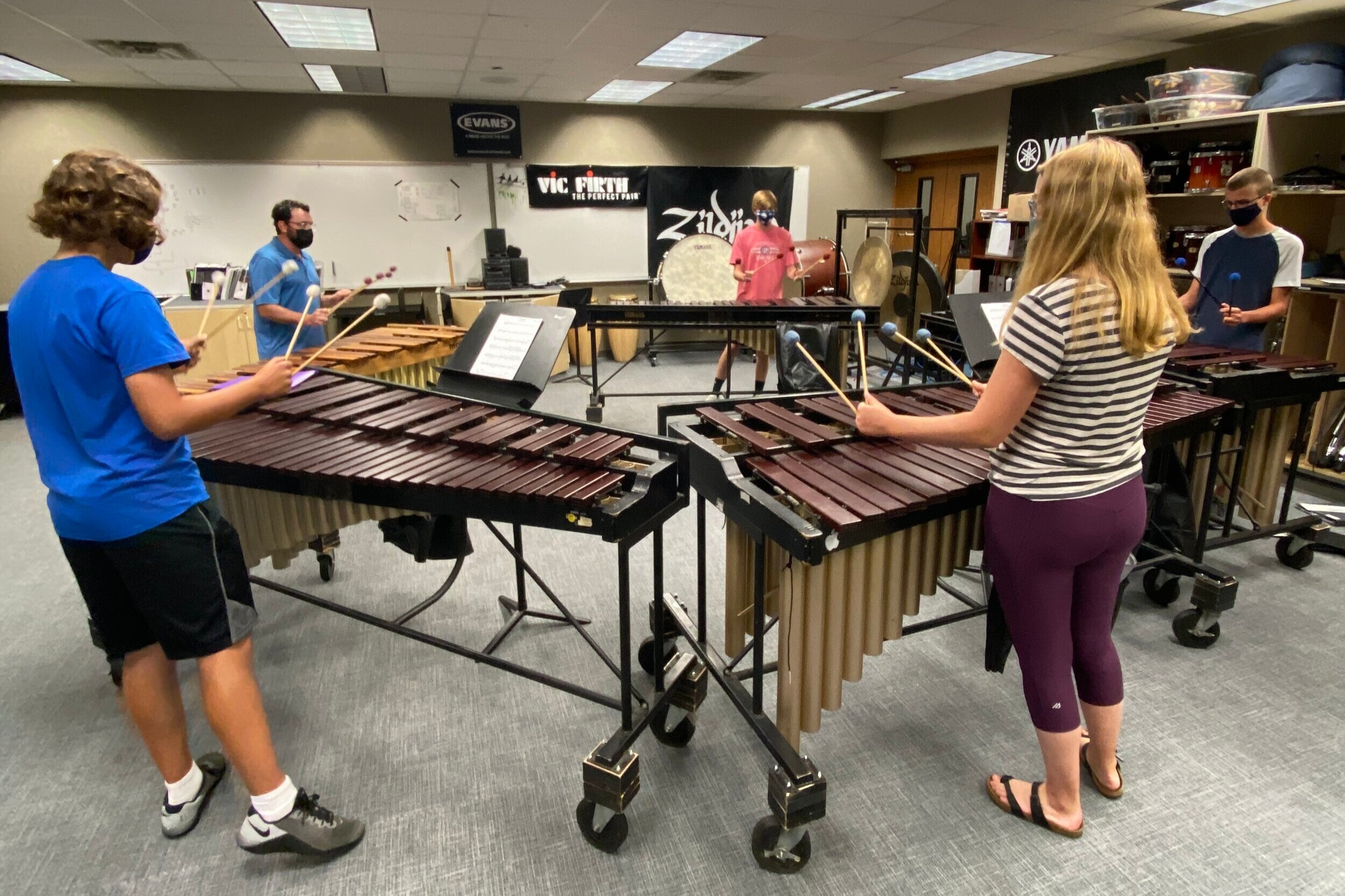One concept all of my teachers tried to impress upon me was that you should rehearse just like you want to perform. At the time I disagreed but I didn’t know how to articulate why. I understood the point my teachers were trying to make but something about that verbiage didn’t feel complete to me.
I am not necessarily saying my teachers were wrong. They wanted us to rehearse with the same vigor and focus we needed to perform with. The point was valid and I catch myself telling my students the same thing. Deep down though I believe my instincts to question this logic were correct. Rehearsal is NOT like the performance, and practice is NOT like rehearsal.
D’Addario’s educational branch (headed by Jim Bailey) has put together a fantastic percussion ensemble that is currently touring. The ensemble stopped by Carmel High School for a day of clinics with our students. The group includes Kyle Thomas (Marketing at D’Addario), Dylan Bram (O’Fallon High School, Phantom Regiment, Matrix), Jerry Noble (Wright State University), and George Willis (West Virginia University). The topic of Practice vs Rehearsal vs Performance was covered in a way that I found inspiring.
What is practice?
Practice is time that we spend by ourselves getting ready for rehearsal and for performance. That being said we must have the performance in mind through the entire process of practice and rehearsal. This requires us to focus on what the audience member is going to experience as a listener. This COMPLETELY CHANGES the way we look at practice. It transforms our thinking from pitches and rhythms to “How can I communicate this music to another person.”
When our mindset is adjusted we start to reach for different tools. Instead of just learning a section we think “As an artist how do I want my audience to experience this?” From there we may listen to recordings. We experiment. We may play the same passage 5 or 6 different ways. Maybe we go completely off script entirely and move a ritard a bar later so that tempo is established more clearly. Whatever it is... we’re not just learning notes.
So what is rehearsal?
Rehearsal is where we fit our creative decisions into the bigger picture. Because we tried multiple variations in our practice sessions we have the skills necessary to quickly and easily adapt to the rest of the ensemble.
But how do we decide the give and take of musical decision making? The quartet played Sculpture in the Wood by Rudiger Pawassar and Fractalia by Owen Clayton Condon. These pieces are filled with obvious examples of leadership and follow-ship that were rapidly handed off from one performer to another. The clinicians pointed out the “Leader” in a few key musical phrases and walked the students through the correct way to follow.
As an audience member I found myself become more aware of dynamic choice, rhythmic integrity, articulation, and phrasing. Whether you are a part of a quartet, a symphony orchestra, or a 330 member marching band (like Carmel), these decisions are what make up our rehearsal. Define a leader, decide how the leader will play, and follow that leader.
Who is the leader? The leader is typically the player with the melody or the player in control of time. If you are still unsure of who the leader is think back to the question “How do I want to make my audience feel when they are experiencing this.” This should highlight the part that is most important.
How does performance differ from the rehearsal?
George used a great analogy. The practice rehearsal performance model can be thought of like any other school course. Practice is homework, rehearsal is the lecture, and the performance is the test. The performance is where we demonstrate our preparation. We continue learning in the performance setting but we take fewer risks. We have a roadmap to follow and we are well studied.
So what’s next?
I left the clinic pumped! I love when a clinic leaves you motivated with a new mindset. I will work to teach my students to be more empathetic towards the audience members and their band mates. I will continue to highlight leadership and follow-ship. I am so grateful for the relationship I have built with D’Addario and with Evans. Kyle Thomas, Jim Bailey, and the rest of the team truly care about music education and building the next generation of performers. For that I am truly thankful!


